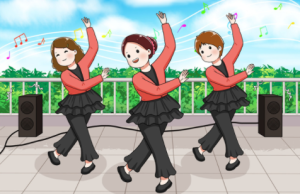Square Dancing: A Melody of Unity, Not a Symphony of Disruption
- 广场舞百科
- 2024-04-07 11:42:30
- 64
Content:

Square dancing has become an integral part of community life in recent years, especially in urban areas. It's a delightful sight to behold; groups of people young and old, moving in unison to the rhythm of music. However, as with any popular activity, there are bound to be varying opinions. The question of whether square dancing should be forbidden has been raised in some circles. I am of the strong opinion that it should not, and here's why.
Firstly, square dancing is not just a recreational activity, it's a means of exercise. In a world where sedentary lifestyles are becoming the norm, any form of physical activity that encourages people to get up and move is beneficial. Dancing is a full-body workout that promotes cardiovascular health, improves flexibility, and enhances coordination. It's a fun and interactive way for people to stay active and build strength, which is crucial for the well-being of society.
Moreover, square dancing is an important social activity. It provides a platform for people from different backgrounds to come together, fostering a sense of community and unity. In a world where technology often hinders human interaction, square dancing offers a chance for face-to-face communication. It builds friendships, bridges gaps between generations, and strengthens neighborhood ties. These social connections are vital for mental health and the overall harmony of a community.
Then there's the matter of the public space. Squares and parks are designed to be used by the public for leisure activities, and square dancing fits this purpose perfectly. It's a democratic form of entertainment that doesn't require expensive equipment or exclusive facilities. The openness and accessibility of square dancing mean that it's available to everyone, regardless of their economic status.
However, it's important to acknowledge the concerns raised by those living near the squares where dancing takes place. The noise generated by music played at high volumes can indeed be disturbing to residents' peace and quiet. But instead of completely banning square dancing, we should look for solutions that balance the needs of both dancers and non-dancers.
One such solution is to set specific time limits for dancing. This way, the dancers can enjoy their activity without causing undue disturbance to the neighbors. Additionally, the use of noise-cancelling headphones or soundproofing equipment can mitigate the noise issue. By working together, the dancing community and local residents can find a harmonious coexistence.
Furthermore, we should encourage the establishment of community guidelines for square dancing. These guidelines can address issues such as noise levels, appropriate dancing areas, and respect for the environment. By fostering a culture of responsibility and consideration among dancers, we can ensure that the activity remains enjoyable for all.
To conclude, square dancing is not something that should be forbidden. It's a valuable cultural practice that brings numerous benefits to individuals and communities. It's a form of exercise, a means of social interaction, and a celebration of community spirit. Instead of resorting to prohibition, we should focus on finding reasonable accommodations that address the concerns of all stakeholders. Let's not rob our communities of this vibrant and healthful tradition, but instead work together to ensure that its tune continues to resonate without causing disharmony.
免责声明:本网站上的所有文章内容均来自互联网。本网站仅在法律允许的范围内使用、分享和传播这些内容,不违反任何版权或知识产权法。如发现本站有涉嫌抄袭侵权/违法违规的内容,请发送邮件25538@qq.com举报,一经查实,本站将立刻删除。
本文链接:https://www.zhuangrou.com/gcw/8351.html



















